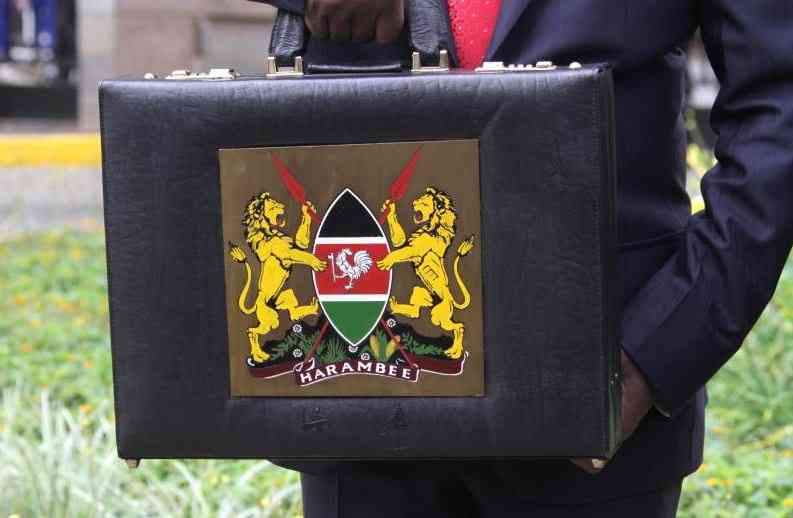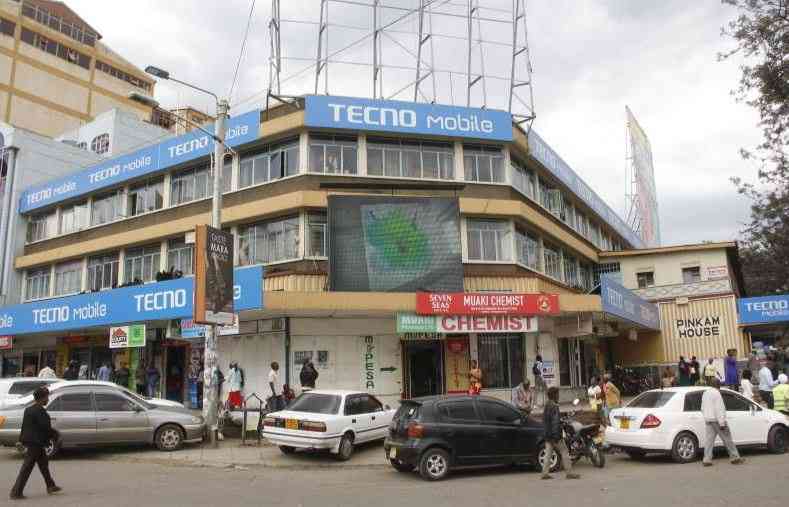 |
|
The military is being accused of not taking time to strategise for the operation. [PHOTO: FILE/STANDARD] |
By KIUNDU WAWERU
NAIROBI, KENYA: On September 1, 2004, terrorists riding in a police van and a military truck drove into a school compound in Russia and immediately started shooting in the air.
School Number One in Beslan, Russia was packed with parents and pupils. The gunmen took hostage over 1,200 people, including 777 children. The armed Islamic militants held the school under siege for three days.
In the third day of the Beslan siege, Russian security forces stormed the building with tanks and rockets.
At the end of it, 334 people lay dead, including 186 children.
Many more were wounded.
The Russian government was castigated over the manner in which it conducted the operation, which ended the siege.
A Kenyan ex-RECCE officer and Close Quarters Battle (CQB) Expert, argues that, historically, Beslan was the worst handled hostage crisis.
But, sadly, he claims that Kenya’s handling of the Westgate crisis, has now broken that record.
The CQB expert, a battle-hardened fighter, facial veins bulging with emotion, recalls hours of helplessly sitting in front of television watching an operation, which he says could have been controlled, going haywire.
Shortly after the attack on Saturday September 21, police officers and civilians, some armed, rushed to the mal, responding to what most thought was a robbery.
FRIENDLY FIRE
The early responders included people like Abdul Haji, who armed with a pistol, saved many lives. Mr Haji is one of the civilians who protect Westlands and Parklands area.
The elite General Service Unit (GSU) RECCE Squad would later join them and many more shoppers who were caught up in the mayhem were rescued.
The RECCE Squad, armed with automatic CQB weapons like the M4 secured most of the mall and reportedly pinned the terrorists down at the Nakumatt shop.
From all indications, they were on the road to winning the battle. Then some Kenya Defence Forces (KDF) appeared on the scene. For lack of a clear command, a RECCE officer, Martin Munene, was shot in the melee, thanks to friendly fire.
Stay informed. Subscribe to our newsletter
“A RECCE would rather die from an enemy’s bullet than friendly fire,” reveals our source, who has been in touch with his former RECCE colleagues.
Most of the elite forces officers, says the security consultant, work as a team, reading each other’s body language and movements and trusting each other with one’s life.
The security consultant recounts an incident in Mombasa when they pursued terrorists to a house. One of them hurled a grenade at them. A RECCE officer reacted first to save the lives of his colleagues.
He shouted a warning to colleagues and quickly jumped over the explosive. He was blown to smithereens, but the rest survived to continue with the mission.
The ex-RECCE officer who has requested anonymity told The Standard that his former colleagues revealed to him that indeed they had gained control in most of the floors in the mall, “systematically and sequentially as trained.”
But with the entry of KDF, the RECCE Squad pulled out leaving the operation in the hands of the military. This move, even some military insiders believe was a bad idea.
A Military officer, who is not authorised to speak to the media, says KDF did not take time to strategise and plan.
TUNNEL
“The RECCE and the other police at the scene should not have withdrawn after the arrival of the KDF. They should have continued engaging the terrorists as the KDF gathered intelligence. The KDF moved in without a strategy,” laments the officer.
The officers were among the evacuation team that attended to the injured KDF Special Forces. By then, the Special Forces had not seen any terrorist, dead or alive. “Where are the bodies? If they are there, we too have not seen them, or they are probably buried in the rubble.”
But the soldiers are convinced that most of the terrorists escaped through a tunnel that the commanders were not aware of until a blast collapsed part of the mall.
After the attack, the officer reveals that the security forces obtained a map of the building which did not show the underground tunnel. A mobile phone video footage from one of the soldiers shows blurred images of the charred aftermath of the attack.
The RECCE squad is believed to be the best-placed to handle hostage crisis.
The RECCE is one of the units of GSU, number four after the training school, headquarters, and the G Company.
The G Company oversees the security of the Statehouse and all State Lodges. The RECCE is chosen from the best of the best of the GSU officers, owing to their skills, aptitude and interest. The martial arts experts get further training at the Solio Ranch and continuous training, in exchange programmes with Israel and US either locally or abroad.
BULLET-PROOF
They train in VIP protection. They are trained in weapon handling with the Crisis Response Team (CRT), demolition and recognition of explosives and as sky marshals (an incognito counter terrorism agent aboard a flight) and extractions. The latter is best suited for hostage extraction.
The training makes “human machines” out of the otherwise poorly paid GSU police officers.
The exit of the RECCE squad is believed to have helped the terrorists regroup and get more weapons from a store they had hired at Westgate.
The terrorists were well conversant with the building, which the soldier says is built like a fortress. It has bullet-proof glasses, and he says they were amazed to see that fire could not spread beyond the rooms it had started.
The KDF Special Forces had placed snipers in a building under construction facing the Mall. They had their telescope-mounted weapons trained on the mall trying to capture movements of the terrorists.
This is standard procedure, says the CQB expert adding that initially, KDF, before the Special Forces arrived, was ill-armed which might further have given the terrorists an advantage.
The officers were using the G3 rifles, which are not ideal for close quarters battle. This was before the arrival of the KDF elite Ranger Strike Force, the Special Forces and the Parachute Battalion, armed with close quarter combat rifles, including the M4 and the Russian-designed PK5, an all-purpose machine gun.
KDF also had several Armoured Personnel Carriers (ACP), or tanks positioned at strategic points.
But the CQB expert says the Westgate situation did not warrant tanks. “The elite squad (RECCE) would not have needed that much time and gun power to end the siege.”
The RECCE squad, he says, is trained to tackle such attackers even when they decide to use hostages as shields.
“The Special Force is able to target the villain with precision, in what they call the double tab, a shot to the head, and another to the chest all in one trigger pull.”
Arguably the Monday blast, was the beginning of the end of the Westgate Siege.
But what still remains a puzzle is what caused part of the mall to cave in. On Monday, at about 1.20pm, three loud explosions were heard from the mall amid continuing gunfire.
DARKENING HOPE
Security forces, journalists and paramedics on Peponi Road and at Oshwal Centre scampered to safety. Later, thick smoke billowed out of the building, darkening the hope of getting out hostages alive.
The KDF source declined to comment about this but other sources said the destruction could have been caused by a rocket-propelled grenade or an 84mm missile.
Sadly, on Tuesday when president Uhuru Kenyatta in a well thought-out speech, partly borrowed from the iconic William Ernest Henley 1875 poem, “Invictus” (unconquered), there was no mention of hostages, who were suspected to be still holed up in the building.
Failure to rescue these hostages, if there were any left, was a major failure on the part of the officers.
The CQB expert says that a successful hostage crisis is one where no innocent civilian is killed or injured. This sees the Special Forces take days and in some instances months, in planning a rescue plan if negotiations fail.
Examples abound of hostage rescues that were hailed as successful, although they were not devoid of casualties. This includes the Japanese embassy hostage crisis, which lasted 126 days.
ENTEBBE AIRPORT
On December 17,1996, 14 members of Tupac Amaru Revolutionary Movement, (MRTA) took hostage hundreds of diplomats, government and military officials and business executives at a party in the residence of Japan’s ambassador to Peru, Morihisa Aoki.
In March, the terrorists called off the negotiations after they said they heard loud noises coming from beneath the floor of the house.
Indeed, from February, the government had devised an intervention plan and were digging underground tunnels. To cover up the noise, police played loud music over loudspeakers in neighbouring streets.
A similar strategy could have been employed at Westgate on the Sunday after the attack when at 5.30pm, two choppers cycling the area, Army Spider 538 and the police helicopter suddenly came menacingly down and flew round and round the mall, making deafening noise. Later, a KDF soldier said that the move was a calculated at drowning the sound of gunfire inside the mall.
This, as many Westgate allegations, was never confirmed.
The Peruvian Armed Forces commandoes finally managed to get into the residence and kill all the terrorists. One hostage and two commandoes also died in the process.
Then there was the Entebbe hostage crisis which took one week. Air France Flight 139 from Tel Aviv to Paris was hijacked at a stop-over in Athens, Greece by members of the Popular Front for the Liberation of Palestine and German revolutionary cells.
INCOMPLETE MAP
The 248 passengers-turned-hostages were flown to Entebbe Airport, Uganda where then President Idi Amin was sympathetic to the terrorists.
On July 1, the Israel government opened negotiations to gain more time to plan a rescue operation.
In the meantime, Israeli intelligence agency, Mossad built an accurate replica of the terminal where hostages were being held, with the help of the engineers and civilians involved in the Entebbe Airport construction. They also surreptitiously gathered information from the hostages about the goings-on there.
This helped them carry out the operation successfully.
If our source at KDF officer is to be believed, the Kenyan military got an incomplete map, and did not seek the engineer’s expertise that might have helped in getting the correct picture of possible escape routes and hiding areas.
The CQB expert, on the other hand says says that CRT teams are trained on this, and time also helps by making the terrorists create a routine. You ambush them after establishing their schedule; when they rest, go to the toilet or when their guard is down.
But such preparation only happens if the terrorists are not injuring and killing hostages. If they do, the security forces have no choice but to plan an urgent rescue plan.
At Westgate, it is not yet known if the terrorists wanted to negotiate. The last people were rescued on Sunday morning, and they had been hiding in various places. They had not exactly been held captive. No threat on the hostages was reported, although later accounts show they might have been tortured. So, were there any hostages in the first place? What happened to them? What about their captors?
 The Standard Group Plc is a
multi-media organization with investments in media platforms spanning newspaper
print operations, television, radio broadcasting, digital and online services. The
Standard Group is recognized as a leading multi-media house in Kenya with a key
influence in matters of national and international interest.
The Standard Group Plc is a
multi-media organization with investments in media platforms spanning newspaper
print operations, television, radio broadcasting, digital and online services. The
Standard Group is recognized as a leading multi-media house in Kenya with a key
influence in matters of national and international interest.
 The Standard Group Plc is a
multi-media organization with investments in media platforms spanning newspaper
print operations, television, radio broadcasting, digital and online services. The
Standard Group is recognized as a leading multi-media house in Kenya with a key
influence in matters of national and international interest.
The Standard Group Plc is a
multi-media organization with investments in media platforms spanning newspaper
print operations, television, radio broadcasting, digital and online services. The
Standard Group is recognized as a leading multi-media house in Kenya with a key
influence in matters of national and international interest.






